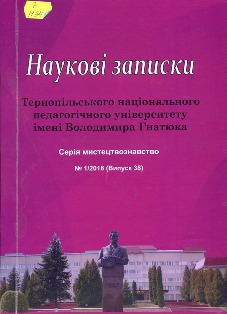АКТУАЛЬНІ ПИТАННЯ РОБОТИ ДИРИГЕНТА З ХОРОВИМ КОЛЕКТИВОМ
Ключові слова:
диригент, хор, жести, міміка, вокальна манераАнотація
У статті досліджено основні актуальні питання, що виникають у процесі професійної діяльності хорового диригента. Виявлено необхідність перегляду методологічних підходів з метою їх оновлення. Виокремлено такі ключові аспекти комунікативного процесу між диригентом та хоровим коллективом, як жести, міміка та мова тіла. Звернуто увагу на необхідності ретельного вивчення кожного виразного фактору твору з огляду на стильовий напрямок, до якого його можна віднести. Запропоновано використовувати такі інновації при підготовці артистів хору, як оволодіння різними вокальними манерами.Посилання
Carnicer, J. Garrido, D.C., Oriola S. (2015), Requena Music and Leadership: the Role of the Conductor, International Journal of Music and Performing Arts, Vol. 3, no. 1, pp. 84–88. (in English).
Claraco, A. V. (2015), The process of nonverbal communication between choir and conductor, Revista Electrónica de LEEME, 36, pp. 49–70. (in English).
Durrant, C. (2003), Choral conducting, philosophy and practice, London, Routledge. (in English).
Gambetta, C. L. (2005), Conducting Outside the Box: Creating a Fresh Approach to Conducting Gesture Through the Principles of Laban Movement Analysis, Greensboro, 354 p. (in English).
Lamb, G. (2012), Choral Techniques, Houston, Rice University. (in English).
Litman, P. The relationship between gesture and sound: A pilot study of choral conducting behaviour in two related setting, London, Institute of Education, University of London 27 p. (in English).
Winnie, B. J. (2014), Contemporary vocal technique in the choral rehearsal: exploratory strategies for learning. A dissertation submitted in partial fulfillment of the requirements for the degree of Doctor of Musical Arts, University of Washington, 135 p. (in English).
Yie, W. K. (2014). A study of students’ attitudes towards the choral conductor’s rehearsal ьbehaviours in four universities in Malaysia, International Journal of Asian Social Science, 4 (12), pp. 1139–1154. (in English).

